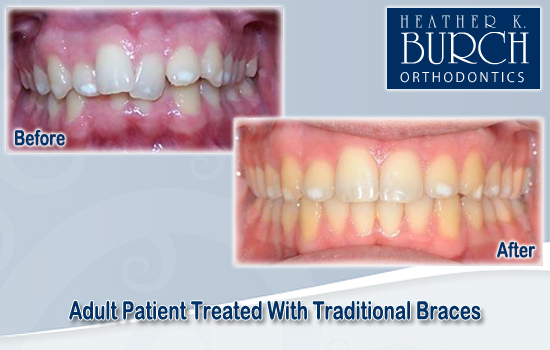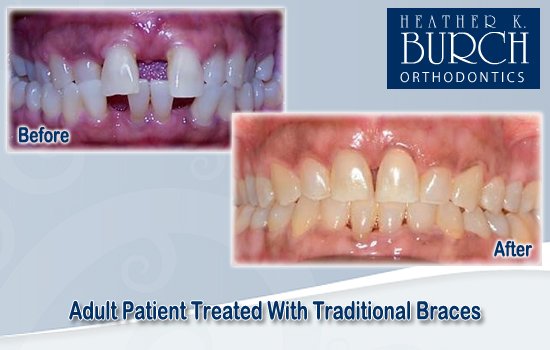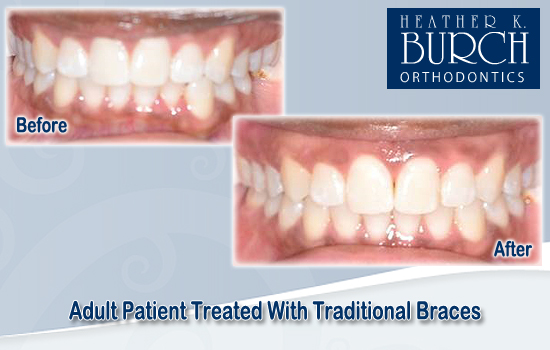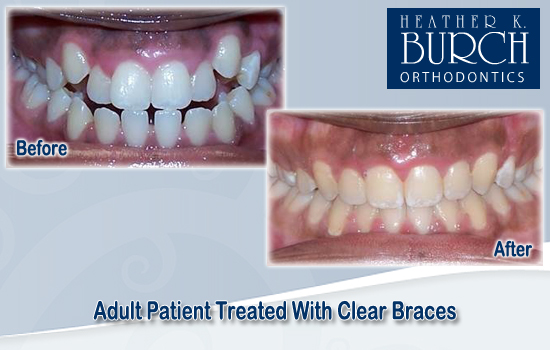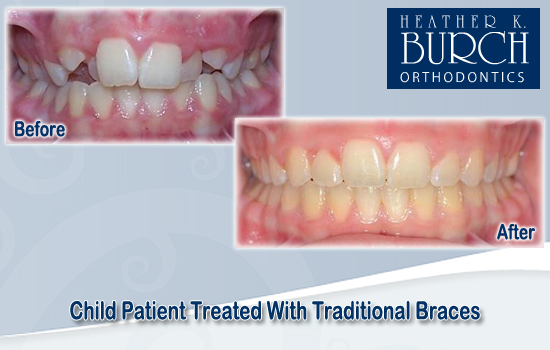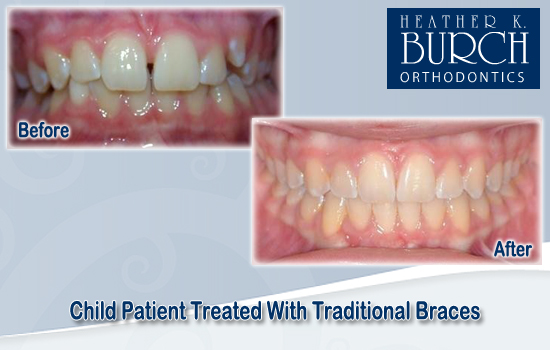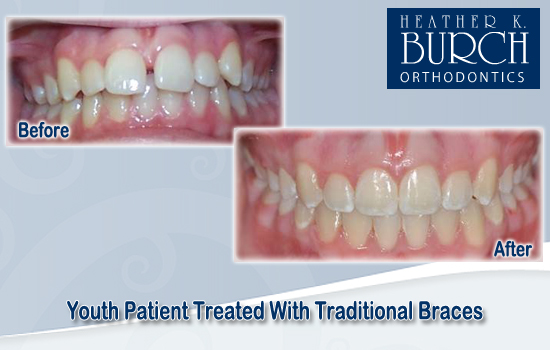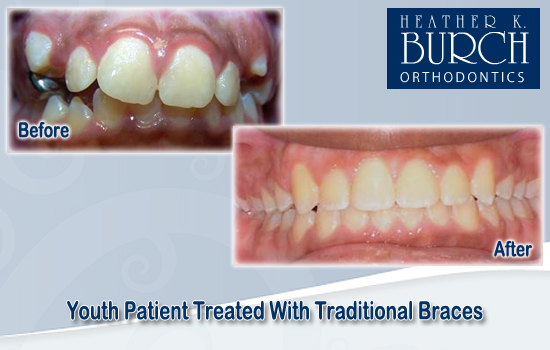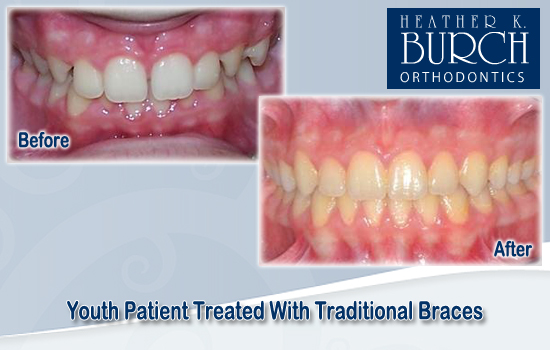3375-F Capital Circle NE, Tallahassee, Florida 32308 P: (850) 877-1692
Right Age

Orthodontists today can successfully correct most problems regardless of the patient’s age. But that does not mean that the orthodontic treatment starting age does not matter. In fact it may play a significant role in the total time and expenses required for the completion of the orthodontic treatment.
Early intervention can make a dramatic impact on establishing the proper occlusal foundation. The American Association of Orthodontists (AAO) recommends that all children have a check-up with an orthodontist by the time they reach age 7, for early detection of any potential problems. By the age 7, some of the permanent teeth have erupted, so that most children have a mix of adult and baby teeth. At this stage of mixed dentition, we can spot potential orthodontic problems related to jaw growth and eruption of adult teeth. Some growth-related orthodontic problems are easier to correct when they are identified early…while the facial bones are still growing.
An early exam allows us to determine how and when a child's particular jaw and/or dental problems should be corrected for the optimal results. Early treatment, or phase one therapy, may be needed to create a better environment to idealize the occlusion for the patient or possibly create an environment to elevate treatment forever. An early orthodontic examination will rarely result in immediate treatment. After evaluating your child, we may simply want to monitor your child periodically while the permanent teeth erupt and the jaws and face continue to develop.
Contact Burch Orthodontics today for your initial early consultation. Your child will be in wonderful hands and you will know what treatments may be necessary. Schedule your complimentary consultation today by completing the short form on our site or calling our office at (850) 877-1692.
Treatable Orthodontic Problems
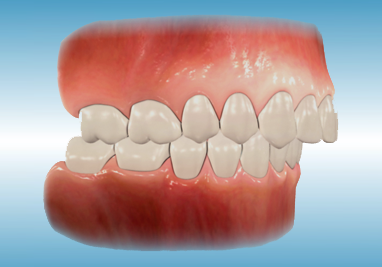
Class II
Class II problems represent an abnormal bite relationship in which the upper jaw and teeth are located in front of the lower jaw and teeth. Class II patients usually exhibit a convex facial profile with a recessed chin. In most cases, this relationship is due to inherited characteristics.
A skeletal Class II problem occurs when the upper back molars are forward of the lower back molars. This gives the patient the appearance of having a recessed lower jaw, a protruding upper jaw, or both.
Class II

Class II problems represent an abnormal bite relationship in which the upper jaw and teeth are located in front of the lower jaw and teeth. Class II patients usually exhibit a convex facial profile with a recessed chin. In most cases, this relationship is due to inherited characteristics.
A skeletal Class II problem occurs when the upper back molars are forward of the lower back molars. This gives the patient the appearance of having a recessed lower jaw, a protruding upper jaw, or both.
Class III

Class III problems are also primarily genetic in origin. In this instance, the lower jaw and teeth are positioned in front of the upper jaw and teeth. The lower jaw may appear to be excessively large, but in many cases the lack of upper jaw development is at fault. Several treatment options are available to correct a Class III problem.
Pseudo Class III

Pseudo Class III, particularly in younger patients, is a function of habit rather than hereditary factors. A misaligned bite may cause the lower teeth to bite forward of the upper teeth, giving the appearance of a Class III. Interceptive treatment is imperative to prevent abnormal growth of both the upper and lower jaws.
Crowding
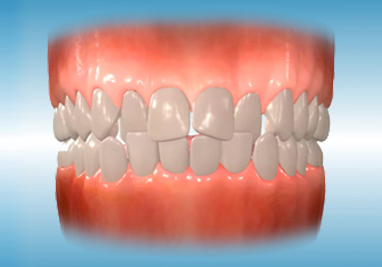
Crowding of the teeth is probably the most common orthodontic problem. Although many factors contribute to dental crowding, this problem typically stems from a discrepancy between the space in each jaw and the size of the teeth.
Crowding can be the cause or result of other problems, such as impacted teeth, retained teeth or teeth that do not naturally fall out. Crossbite of the front or rear teeth can also cause the teeth to become crowded.
Spacing

Spaces between teeth are another common problem associated with the need for orthodontic care. Like crowding, spacing may be related to a tooth-to-jaw size disharmony. Spacing may occur between the front and the back teeth. Tooth size discrepancies, such as smaller teeth or abnormally shaped teeth, or tongue thrust habits can also create abnormal spacing.
Openbite
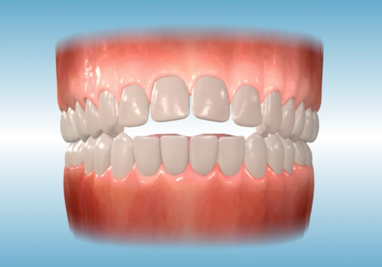
An openbite can occur with the front teeth, known as an anterior openbite or with the back teeth, referred to as a posterior openbite. An anterior openbite is the lack of vertical overlap of the front teeth and can usually be traced to jaw disharmony or habits such as thumb sucking or the thrusting of the tongue against the front teeth. A posterior openbite is a problem in which the back teeth do not meet vertically, which keeps the jaw from functioning properly.
Incisor Overbite
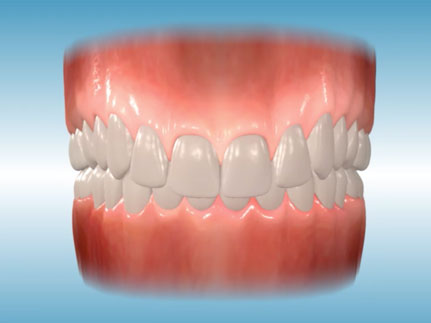
Also known as a deep bite, incisor overbite is excessive vertical overlapping of the front teeth and is generally found in association with a discrepancy between the length of the upper and lower jaws. It usually results in excessive eruption of the upper or lower incisors, or both.
Excessive Gingival Display
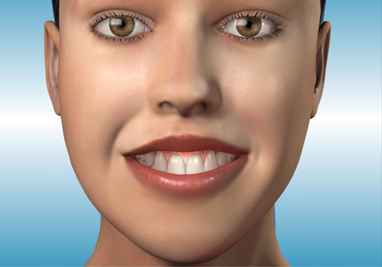
Also known as a gummy smile, this orthodontic problem gives the appearance of excessive exposed gums on the upper arch. There are several treatment options for this problem. It may simply involve lifting the upper front teeth using braces to help reduce the excessive gum display. In more severe cases with a jaw discrepancy, surgery may be necessary to lift the upper jaw to help reduce the excessive exposure of the upper gum tissue.
Crossbite

A posterior crossbite will usually result from a narrow upper jaw or abnormally wide lower jaw. A narrow upper jaw will often force a patient to move the lower jaw forward or to the side when closing into a stable bite. When closed into this accommodating position, the lower teeth are located outside the upper teeth.
A posterior crossbite can involve one side of the jaw, known as a unilateral crossbite, or both sides of the jaw, known as a bilateral crossbite.
Choose Your Look
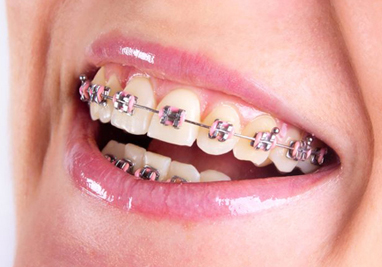
Traditional Silver
These are the most common type of braces. Made of nickel-free high-grade steel, they are much smaller and more comfortable than those in the past. We offer a variety of colored elastics which are changed at every appointment.
Traditional Silver

These are the most common type of braces. Made of nickel-free high-grade steel, they are much smaller and more comfortable than those in the past. We offer a variety of colored elastics which are changed at every appointment.
Clear or Ceramic Braces

Clear Braces are made of porcelain or ceramic. The brackets are tooth colored and are less noticeable than conventional brackets made of metal because they blend in with the color of the teeth. They work the same way as metal braces. Many patients that want a beautiful smile, but want to make their braces less noticeable, choose this option for treatment.
Incognito Lingual
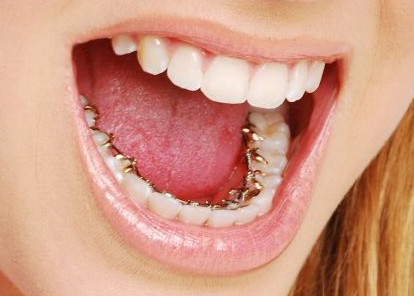
Lingual Braces are placed on the rear of your teeth, hiding the majority of the metal parts. They are virtually invisible from the front, making them an excellent option for patients who wish to avoid the highly-visible traditional braces. Lingual Braces can realign your teeth just as effectively as traditional braces but without the aesthetic worries.
Invisalign

The Invisalign System for adults and teens is a series of clear, removable templates that fit over teeth. Generated by computer simulation, they gradually move the teeth for the correction of some bite problems. Our orthodontists are Invisalign Certified Orthodontists. During your initial consultation, you and Dr. Burch will discuss your concerns to determine if you are a good candidate for Invisalign. We will take x-rays of your teeth, which will be used to create digital 3-D images. From these images, Dr. Burch will map out your treatment plan and tell you the approximate length of treatment.
Before and After
At Burch Orthodontics in Tallahassee we know that every patient needs the treatment plan that is right for them. After a thorough initial consultation our doctor will outline the steps that need to happen to achieve the smile you’ve always wanted. Some patients will be fine with traditional metal braces while others may be better with iBraces, Invisalign, Ceramic Braces or HYPE brackets.
Browse the before and after gallery above to see the effects of the different types of orthodontic treatments. Then, schedule your complimentary consultation today by completing the short form on our site or calling our office at (850) 877-1692.
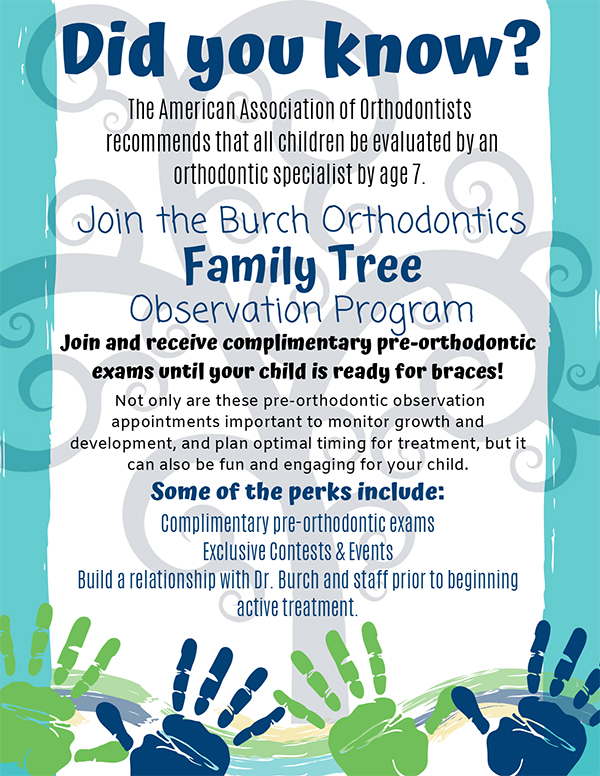

REFER A FRIEND
Thank you for trusting your smiles with us. Refer a Friend or family member and receive a sweet treat!
LEARN MORE

